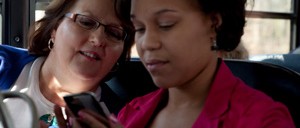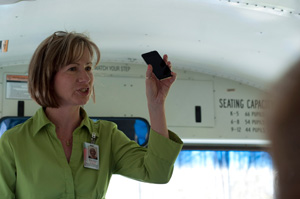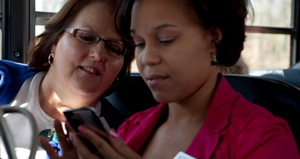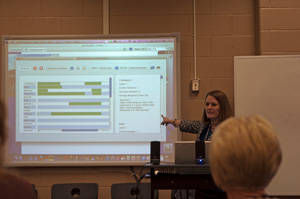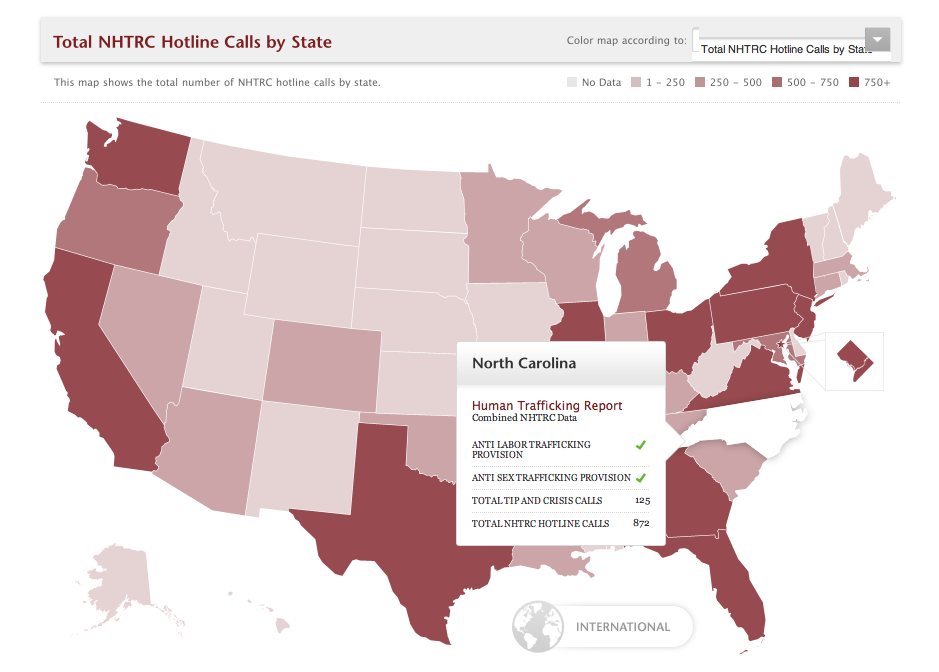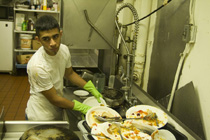AAUW, SALISBURY BRANCH
AAUW: Since 1881 AAUW Salisbury Branch: Since 1951
Spring Planning Meeting,
Thursday May 10, 2012 6:30 PM
Trinity Oaks Retirement Community
Second Floor, Special Events Room
Minutes
The AAUW, Salisbury Branch met on Thursday May 10, 2012 at the Trinity Oaks Retirement Community at 6:30 PM in the Special Events Room. The following members were present: Brunetta Franklin, Eileen Hanson-Kelly, Holly Czuba, Kathy Taber, Billie Simmons, Kathy Pulliam, Edith Alcorn, Greg Alcorn, Linda Hauze, Carol Cody, Becky Hammill, Ann Medlin, Patricia Trueblood, Ruby Walker, and Dixie Scott. The following members were absent: Lori Eberly, Nancy Bilson, Catrelia Hunter, Betty Fellows, Bonnie Hodges, Nicole Sherrill-Corry Zebbie Bradley-Bondurant, Harriet Murphy, Norma Goldman, Erma Scarlette, Elaine Stiller, Linda Kesler, Alyce Lanier, Renee McCachren, Lollie Streiff, Jeannie Sherrill, Judy Grissom, Carolyn Blackman, and Donna Wiseman.
Brunetta Franklin, President, welcomed everyone to the meeting.
Kathy Pulliam, Secretary, presented the minutes from March and April 2012 meetings. A motion was made by Greg Alcorn and seconded by Linda Hauze to accept the March minutes as corrected. A motion was made by Becky Hammill and seconded by Edith Alcorn to accept the April minutes as corrected. Both motions passed. Eileen Hanson-Kelly thanked Kathy for keeping the minutes the past several years.
Executive Reports:
Programs:
Brunetta reported that the Brunch in April had a good meal with a great program. Eileen was surprised that we did not have any outside people to attend even after we had some advertisement in the paper concerning the Brunch. Many felt that the buffet was preferable over the plated meals as you could choose which items you wanted. Eileen said the cost was the same for either one. She also said we had to pay for the meals of those who didn’t attend and had made reservations. This was not the case last year as we only paid for the total number there. There was some discussion as to whether we wanted to have a change in venue for next year and this would be discussed later.
Membership:
Becky Hammill reported that Kyndall Moore had become a new member and that Kelly Snipes was interested in becoming a member in June.
Finance:
Eileen Hanson-Kelly, Treasurer, provided the Financial Report.
Eileen then passed out copies of the proposed budget for 2012-2013. It basically followed this year’s budget with just a couple of increases relating to convention travel and hotel, supplies, and scholar treats. Eileen expected us to still maintain 30 members and continued sales of Sketches and note cards to provide the necessary income we needed.
Committee Reports:
Bylaws/Policies:
Edith Alcorn reported that the Bylaws Committee had met and made revisions. We had made good changes and are moving along. The revised Bylaws document is in the national office for review. Due to many branches having difficulties with the revisions the deadline was extended to May15, 2012.
Education/LAF:
Holly Czuba had no updates at this time for LAF. Brunetta took a few minutes to explain to our new members what the LAF does and how it is so important to all women. Regarding Education, Holly said that she would be doing a preview of her NCCSWL workshop on Monday May 14th at 6:30 P.M. at the Catawba College Environmental Science Building. She also reminded members of the Salisbury Heart Chase on May 12th. This is a fun fitness challenge. Holly also said she would need to give up this committee for next year as she was moving to a different office in our branch.
Goldman Scholarship:
Kathy Pulliam reported for Judy Grissom who was absent. Two scholarships will be presented to two deserving young women at their senior awards assemblies. Kathy would be presenting the East Rowan student with hers and she thought Lollie Streiff would be presenting the other one to a student at North Rowan. These newest Goldman Scholars and their parents will be in attendance at the Annual Picnic in June.
Public Policy:
Eileen reported that she continued to monitor national issues especially those that affect women. She encouraged us to participate in the AAUW Two Minute Activist or the “Take Action” link. Eileen said she would check actions and continue to send items about Title IX, which is our PPP topic.
Publicity/Communications:
Kathy Taber had no updates to report. She continued to send press releases to the Salisbury Post. It was noted that we had more press this year and a big thank you was given to Kathy for helping with this.
Yearbook:
Ann Medlin asked if there were any suggestions regarding our yearbook. Holly suggested photos of members be included as it would be helpful to put names with faces especially for new members. Billie Simmons agreed. It was also suggested to have the membership date of each member listed in the yearbook and a page devoted to the founders of our local AAUW Branch. Regarding identifying members it was suggested that nametags would be nice to have especially some kind that could be permanent and worn at the meetings. Greg Alcorn said that he would get nametags made up and printed for next year. Brunetta sais that to access the AAUW website you needed to use your member id.
Other Business:
Brunetta said that we would need to choose a theme for the 2012-2013 year. A suggestion from Dr. Patricia Trueblood was “Equipping Women and Girls for the Future”. Meeting dates for 2012-13 were discussed with the second Thursday at 6:30 still suiting everyone. If Harriet Watson and her husband agreed it was suggested to have the Christmas Covered Dish Meeting again at their Clubhouse as this past years was enjoyed by all there. Possibilities for a program could come from Program in a Box again. Kathy Taber said all the information one would need was there for a clear, concise program.
The Nominating Committee, with discussion concerning some positions, had come up with a slate of names and these would be presented at the June meeting for approval. The positions needing to be filled and the nominee are as follows:
- Program Vice-President: Holly Czuba
- Treasurer: Eileen Hanson-Kelly
Any openings in Committee positions will be appointed by the President and do not require nominations.
AAUW NC Annual Meeting:
Brunetta provided us with the names of the new officers on our agendas. She said that the Vice President will take whatever is needed such as membership, etc. Online memberships are now available. Mini grant money is still available and she asked us to think of possible grant opportunities. Some suggested were Food for Thought (backpacks with food for hungry students and their families over the weekend), 8th Grade girls visiting a college campus, and Knootz Elementary School needs. At the meeting members were encouraged to join the Tarheel Branch for $5.00 as it gave a great access to other members and ideas. The website is Tarheel.aauwnc.org. The National AAUW Convention will be held in New Orleans, LA June 9-12, 2013.
June Picnic:
Billie Simmons said that it would be held at the covered picnic area at Rufty-Holmes Senior Center on Thursday June 14, 2012 at 6:00 P.M and there would be a sign out front to let members know where to go. Reservations need to be in by June 6th so Billie could contact the caterer Debbie Suggs with a total count. Eileen said that she would be out of town and everyone will need to send their reservations/checks to Kathy Pulliam. Eileen also said that members could include their dues with their check for the picnic. Brunetta said that Judy Grissom will make sure the Goldman Scholars and their parents are invited.
There being no further business, the meeting was adjourned at 8:30 P.M.

